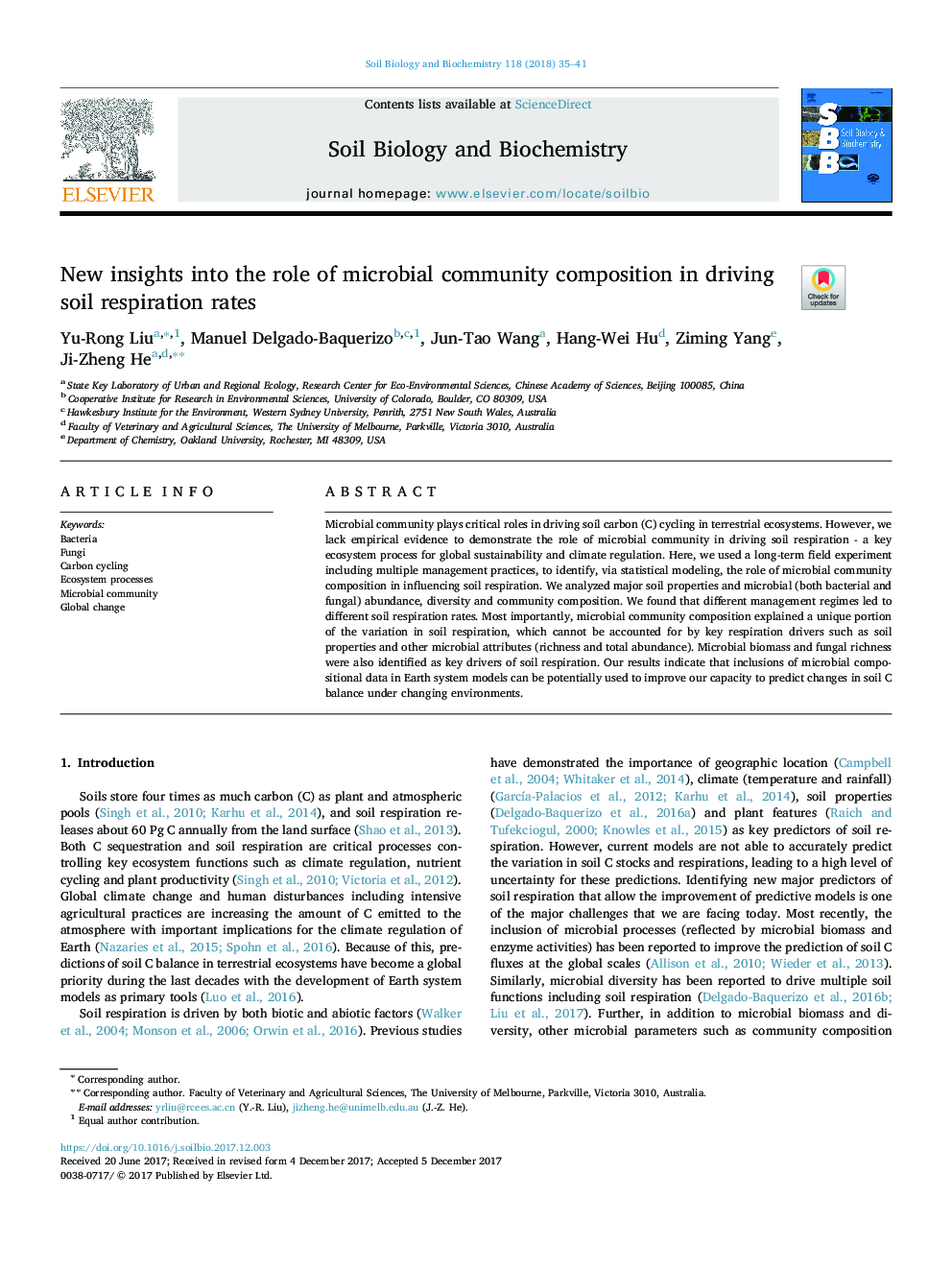| Article ID | Journal | Published Year | Pages | File Type |
|---|---|---|---|---|
| 8362953 | Soil Biology and Biochemistry | 2018 | 7 Pages |
Abstract
Microbial community plays critical roles in driving soil carbon (C) cycling in terrestrial ecosystems. However, we lack empirical evidence to demonstrate the role of microbial community in driving soil respiration - a key ecosystem process for global sustainability and climate regulation. Here, we used a long-term field experiment including multiple management practices, to identify, via statistical modeling, the role of microbial community composition in influencing soil respiration. We analyzed major soil properties and microbial (both bacterial and fungal) abundance, diversity and community composition. We found that different management regimes led to different soil respiration rates. Most importantly, microbial community composition explained a unique portion of the variation in soil respiration, which cannot be accounted for by key respiration drivers such as soil properties and other microbial attributes (richness and total abundance). Microbial biomass and fungal richness were also identified as key drivers of soil respiration. Our results indicate that inclusions of microbial compositional data in Earth system models can be potentially used to improve our capacity to predict changes in soil C balance under changing environments.
Related Topics
Life Sciences
Agricultural and Biological Sciences
Soil Science
Authors
Yu-Rong Liu, Manuel Delgado-Baquerizo, Jun-Tao Wang, Hang-Wei Hu, Ziming Yang, Ji-Zheng He,
